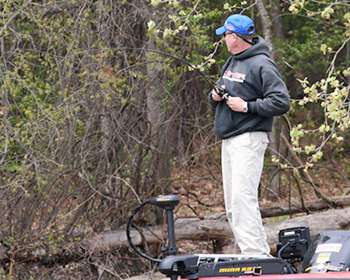
A smallmouth is a smallmouth is a smallmouth … or is it? Massachusetts pro Mark Burgess, who learned to fish on New England smallmouth factories like New Hampshire's Lake Winnipesaukee, says not all smallmouth bass are created equal.
He's not a smallmouth elitist — any bronzeback he can catch in a tournament makes him smile — but depending on where he's fishing, he approaches them like three different species. There's the typical Northern strain, found on lakes like Winnipesaukee and Champlain. There's the Southern group, found on big impoundments like Pickwick and Kentucky Lake. And then there are the Erie footballs, seemingly a species unto themselves. "There is a huge difference between Northern and Southern smallmouth," Burgess says.
"In the South, you find them in places where you'd expect to catch largemouth. That happened to me during the Bassmaster Open on Kentucky Lake last year. I caught them all on a vibrating bait, and they were extremely strong. Actually, they act more like a spotted bass than a smallmouth." He was surprised not only by how hard those Kentucky Lake smallies pulled but also by the fact that they tended to bulldog down into the depths.
By contrast, the smallmouth he grew up fishing for in New York, New Hampshire and Maine "hit and then go right to the ceiling." The typical Northern smallmouth tend to move in search of baitfish, roaming along with schools of prey. On Erie, by contrast, many of the fish spend their entire lives out on the shoals. "They do that on Erie too," Burgess says, citing Kota Kiriyama's 2008 Elite Series win there, in which Kiriyama followed suspended monster smallmouth gorging on roaming baitfish.
As a rule, however, they tend not to be quite as nomadic. "You fish for them a little differently, too," he added. "On Erie, most of the time you only need to do two or three things if you're fishing offshore. You can go out with two drop shot rods, a couple of tubes and maybe a football head jig."
Last year he came in sixth in a Northern Open on Erie entirely on the tube. A few years earlier he made the cut in another national tournament and "fished the drop shot the whole time."
Those techniques may work on fisheries other than the Great Lakes, but his smallmouth arsenal expands elsewhere to include a broader palette of tools. While they all may share the same basic DNA, he said that Southern smallmouth react more dramatically to changes in the weather. "As a rule, smallmouth can burn you," he stated. "You find them on a windblown point and then the wind changes direction and they'll change where they're located." But the Southern variety is harder to relocate in most instances.
The typical Northern smallmouth also reacts adversely sometimes to bad weather, but the resulting issue is typically not one of relocating the school — that's not too tough — but rather getting them to bite. "Sometimes you just have to give up on them and move to another school," Burgess claims. "I haven't had that same problem at Erie."
(Provided by Z3 Media)





